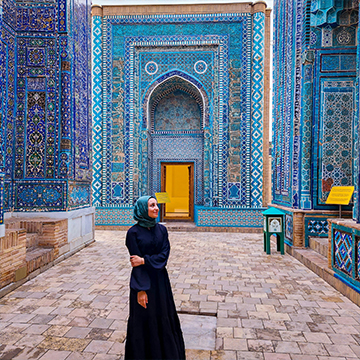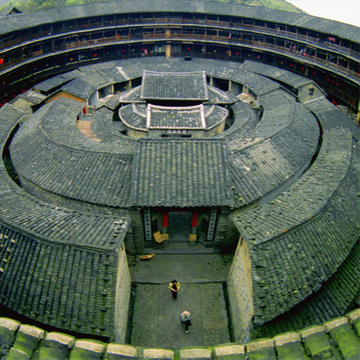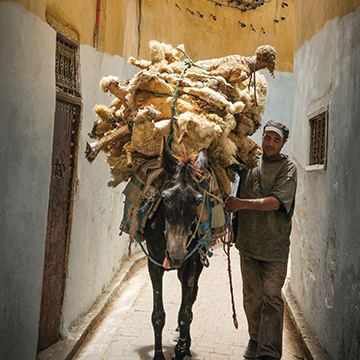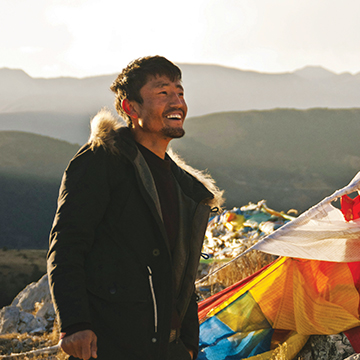Northern Buddhists
PRAYING FOR THE BUDDHIST WORLD EP 2
Unwilling to Forsake the Living

After the passing of Siddhārtha Gautama, Buddhism began to decline in India, but the flame of its teachings was carried afar. The religion spread across the world via three major routes. Among them, Northern Buddhism—also known as Chinese or Mahāyāna Buddhism—traveled through the Central Asian Silk Road into China, and later crossed the sea to Japan and Korea.
According to the Preface to the Sutra of Forty-two Chapters, Emperor Ming of Han dreamed one night of a golden figure. His ministers interpreted it as the Buddha of India, so the emperor sent envoys to bring Buddhist monks and scriptures back to Luoyang. There, he built the first Buddhist temple in China—White Horse Temple. This moment is widely recognized as the beginning of Buddhism’s introduction into China. Over the next three to four centuries, Northern Buddhism gradually adapted to its new cultural context, developing several distinctive features:
|
|
|
|
The History of Japanese Buddhism
552
① Ancient Japan:
From Suppression to Establishment
From Suppression to Establishment
Buddhism was introduced to Japan via the Korean kingdom of Baekje. It wasn’t until Prince Shōtoku—regarded as the "founding father of Japanese Buddhism"—incorporated Buddhist principles into national law and curbed the influence of powerful Shinto clans that Buddhism found a foothold. At the time, people valued Buddhism primarily for its role in warding off disasters and invoking blessings. This early phase is often referred to as “prayer-based Buddhism.”

Shitennō-ji, Japan’s oldest official temple.
710
② Nara Period:
Flourishing to Corruption
Flourishing to Corruption
Buddhism thrived during this period through its contributions to charity, medicine, education, public works, and sutra transcription. Monks were often highly skilled in medicine and regarded tending to the sick as the noblest form of merit-making. However, the wealth and luxury of the capital led many monks and nuns astray. A reform movement emerged in the early Heian period to restore monastic discipline.

Tōdai-ji in Nara, also known as Daibutsuden, is the world’s largest wooden structure. Deer roam freely throughout the temple grounds.
794
③ Heian Period:
The Tang Dynasty Pilgrimage Movement
The Tang Dynasty Pilgrimage Movement
During this era, monks like Saichō traveled to China and later founded the Japanese Tendai school (which combined elements of various Buddhist traditions). Esoteric Buddhism, introduced by Kūkai upon his return from China, gained popularity in Japan for its elaborate rituals, sacred implements, and mantras, eventually developing into the Japanese tradition of Tōmitsu, best known today as the Shingon school. It became fashionable among the imperial family to take monastic vows for prestige and gain access to temple wealth and religious privileges. However, temples became rife with corruption, and armed monastic factions clashed. In the turmoil, Pure Land beliefs took root, leading to the rise of Jōdo Shinshū (True Pure Land) and Nichiren Buddhism during the Kamakura period.

1185
④ Kamakura Period:
The Rise of Zen
The Rise of Zen
As political unrest grew, Pure Land Buddhism spread rapidly. Cultural exchange with China’s Song dynasty sparked a major revival of Zen (which had first arrived from Tang China during the Nara period). Its simplicity, austerity, and spiritual clarity resonated with the samurai class and gained the support of the Hōjō shogunate. Zen deeply influenced many aspects of Japanese culture, including the tea ceremony, flower arrangement, swordsmanship, archery, and landscape design.

1333
⑤ Muromachi Period:
Confucian Thought in the Wake of Zen
Confucian Thought in the Wake of Zen
The Muromachi shogunate modeled its official temple system after China’s Song dynasty, establishing major temples like Tenryū-ji and Kennin-ji as part of the “Five Mountains and Ten Temples” network. Prominent Zen masters fostered the development of "Gozan literature," which helped introduce Confucianism into Japan. The Rinzai school flourished among the aristocracy, while the Sōtō school maintained its principle of avoiding courtly and political entanglements, focusing instead on teaching commoners and regional lords.

Tenryū-ji, renowned for its fall foliage.
1603
⑥ Edo Period:
Shogunate Protection and Control
Shogunate Protection and Control
During the Edo period, the shogunate implemented the danka system, requiring every person to be affiliated with a Buddhist temple. Monks effectively became local officials overseeing household records, receiving offerings from the public. However, this bureaucratic role gradually sapped Buddhism of its vitality. In the declining years of the shogunate, Confucian reverence for the emperor gained traction, fueling a revival of imperial worship.
1868
⑦ Meiji Restoration:
Stepping Out of the Greenhouse
Stepping Out of the Greenhouse
Amid widespread calls to separate Shinto from Buddhism and abolish the latter, Japan’s indigenous Shinto stepped out from Buddhism’s shadow after more than a thousand years of subordination. Japanese monks who had studied in Europe introduced Buddhist studies to the West, while also engaging with early Indian Buddhism and Western theological methods, which they brought back to Japan. For a time, Buddhist scholarship became overly academic, disconnected from everyday life. After World War II, as people struggled with survival, Buddhist schools were forced to re-engage with society and seek relevance. Today, Japan is home to a rich diversity of Buddhist traditions, with Jōdo Shinshū, Jōdo-shū, Sōtō Zen, and Tendai being the most prominent, alongside a flourishing array of new religious movements.
















































